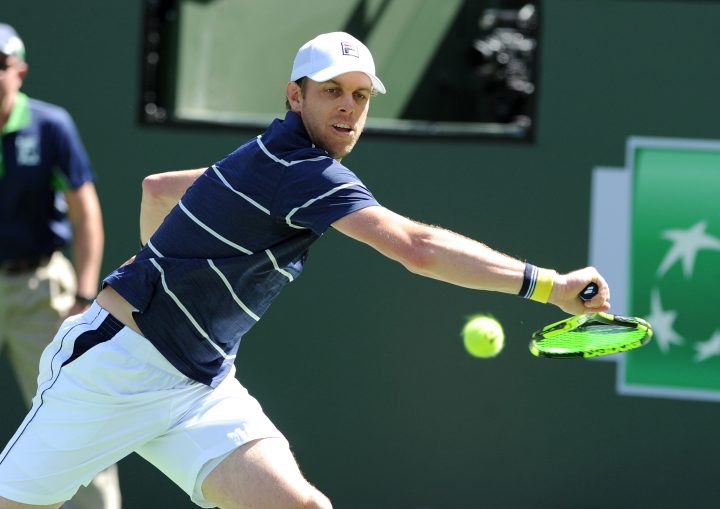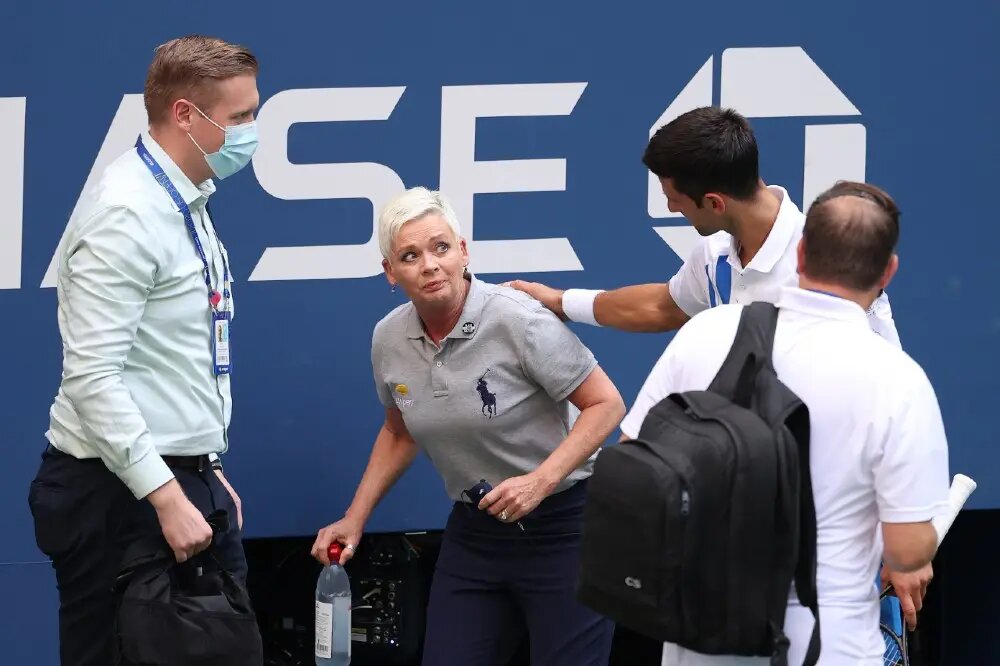Where Was Waldo?

Dealing with Covid-19 protocols was puzzling for players. In some cases, the “do’s and don’ts” changed during the event. Though there were some general rules that carried over from tournament to tournament, it came down to “stand alone” interpretation and subsequent enforcement by tournament officials. This is what happened to Sam Querrey at the St. Petersburg Open in October.
He tested positive prior to the start of play. So, did his wife, Abby Dixon and his young son, Ford. The Querreys were planning to follow the protocol dictates and quarantine at the Four Seasons tournament hotel. But the family’s grasp of the rules differed from those the tournament was enforcing. The more discussion that took place the more confusing the situation became. This led to a Querrey decision – Escape. That’s what the family did, stealthily leaving St. Petersburg on a private plane. No one knew where they were, which brought about a “Where’s Waldo?” like search.
Word is the family ended up in a Western European country. Querrey, of course, broke the COVID-19 protocol rules of the tournament, along with ATP regulations. It is going to be interesting to see what the ultimate punishment might be…once “Waldo” – Querrey is found.
(Though Querrey hadn’t packed the bold red and white-striped shirt, at the end of December the ATP decided to issue a suspended $20,000 fine for breaching COVID-19 protocols at the St Petersburg Open. But the fine will be forgiven if he does not commit further breaches of health and safety protocols related to COVID-19 within a probationary six-month period.)
Querrey grew up in Southern California, which might lead to a logical non-Waldo segue. Venus and Serena Williams were residents for years and Sloane Stephens maintained a Southern California-Florida relationship for some time. All four have strong ties with the area, but are MIA most of the time.
As youngsters, the sisters played a few local junior tournaments. Otherwise, they were content to work, under their father Richard’s direction, at East Compton Park, in Compton, California. Located in a culturally mixed African American/Hispanic area, drive-by shootings were commonplace. Having heard about their one-of-a-kind talent, I traveled to Compton to watch them run through drills. Then, in May 1990, I watched them compete in a Youth Vs. Experience match, involving Southern California stars of tomorrow playing stars from the past.
In what turned out to be a preview of the women’s game, Venus and Serena stole the show. They were fearless balls strikers with wonderful gap-toothed grins. But, what really stood out was a comment made by tennis legend, Jack Kramer. After watching Venus, who would turn 10 on June 17th and Serena, whose ninth birthday would take place on September 26th, he admitted being very impressed by their court savvy. But, more telling, the International Tennis Hall of Famer believed that Serena had more potential.
In 2011, Venus announced she had Sjogren’s Syndrome. Since then, she has adroitly handled the complexity of playing and contending with the illness. This year though, her record was 1-8 and her year-end ranking was No. 78. Maybe she should consider taking a permanent leave of absence and devote her attention to interior design and clothing development?
We first crossed paths with Sloane Stephens and her delightful mother, Sybil Smith, at Roland Garros in 2010. In talking with Smith, who had been an All-American swimmer at Boston University, we discovered she grew up in Fresno, California. Coincidently, her son Shawn Ferrell would become a baseball and football standout at Notre Dame High School, (which I attended), in Sherman Oaks, California. Since our meeting in Paris, Smith has remained a friend.
What does this have to do with Sloane? Since winning the 2017 US Open, Sloane, who has been “Black Lives Matter” outspoken, has often performed in lackadaisical fashion. Last year, she was 4-11 and her ranking dropped to No. 39. Since she became engaged to football (soccer star) Jozy Altidore, she has more than just tennis in her life… Perhaps a “ciao” to tennis should be inserted and a hello to life away from the game should be considered.
In recent years, Serena has been devotedly focused. Since winning the 2017 Australian Open, passing Margaret Court’s record to secure her 24th Grand Slam singles trophy, has become an obsession. In ’20, she had a formidable 17-5 showing but she finished the year at No. 11. More to the point, she has failed in five straight majors to better Court… Maybe spending added time with her precocious daughter Olympia would offer her more in the long run?
P & L Statements Would Be Interesting To See…
The cheers received for staging the US Open and Roland Garros were deserved. Regretfully, they were matched the mantra-like drone throughout both tournaments about how much money was being lost in holding the events. The COVID-19 testing requirements and the protocols necessitating “hotel bubbling” and monitoring that was required, practically erased any income resulting from sponsor agreements. The US Open explain it annually earns $140 million in assorted media rights fees. It has an eleven-year, $825 million deal with ESPN, which works out to about $75 million annually.
Without fans and other assorted income sources, tournament profits were expected to be off by nearly 80 percent. That means, that the 17 USTA sections, which share in the financial success usually realized, were in trouble. The shortfall caused the sections to reduce staffing and programming. Future growth was brought up short by budget limits; the focus became “let’s maintain”.
Staging any activity during the time of COVID-19 was risky. Holding a two-week event was almost tempting fate, but they pulled it off. Were “Bravos” deserved? Absolutely. Were there “Needed Do Overs?” No question.
As mentioned earlier, the Fédération Française de Tennis wanted to allow 11,500 spectators per day into the Stade Roland Garros show courts. The Minister of Health reacting to a surge in virus cases decided the tournament would have to make do with 1,000. Last year Roland Garros realized around €260 million (more than $319 million dollars). In 2020, while still having sponsors and broadcasting support, along with a sundry list of souvenir sales, there were massive expenditures. A roof was added to Court Philippe Chatrier and lights were added around the grounds. The lights were originally intended to be installed just on the show courts, but in the end, they were placed on twelve Stade Roland Garros courts. There were additional costs of player hotels, virus testing and other assorted expenses brought about by COVID-19 life in a modified bubble.
It is estimated that more than €130 million (almost $160 million dollars) was lost this year. The deficit has made some officials unhappy that the decision was made to stage the tournament. Given the health restrictions and other limitations that were in place, it was not wise. In view of the staggering financial losses, there was talk about taking legal action. Only time will tell if this is becomes a reality.
Forgetting the “It’s great to be back playing…” good feelings that resulted, what is going to be the long-term result of holding the US Open and Roland Garros? Will the losses bring about increased sponsorship fees and higher ticket prices?
Only a look at this year’s P & L’s (Profit & Loss Statements) will divulge what the future really holds for the two majors. And the chance of seeing unredacted tournament paperwork is pretty slim…






